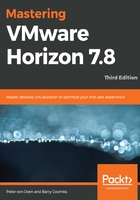
Unified communications support
Like high-end graphics, if we had a conversation about running a unified communications solution or VoIP session on a VDI desktop a couple of years ago, I would have described it as Kryptonite for VDI! Although it technically works, the first call might have acceptable performance, but adding more users would ultimately bring the servers to their knees with the amount of traffic generated and resources required to conduct the calls. Eventually, the experience would have become completely unusable. Unified communications was not a good use case for VDI.
However, this has all changed, and you can now happily use a unified communications solution with your virtual desktop. There was always a great use case to deploy unified communications with VDI; it's just that it never worked! Take, for example, a call center environment. with the ability to provide a DR solution or allow users to work from home during a snowy day and still be able to make and answer calls as if they were in the office.
So, why didn't it work? Quite simply, because when you placed a VoIP call from your virtual desktop, the call would go over the PCoIP protocol, causing bandwidth issues and making your desktop perform slowly, and placing an additional load on the servers in having to process the call. This is detailed in the following diagram, which shows how it was before and the result afterward:

To solve these issues, and to enable a working solution, VMware concentrated on three key areas and delivered the following new features/enhancements:
- Offloading media processing to the client device by removing the load that was placed on the server in the data center
- Optimized point-to-point media delivery, eliminating the hairpin effect
- High-quality UC VoIP and video with QoS